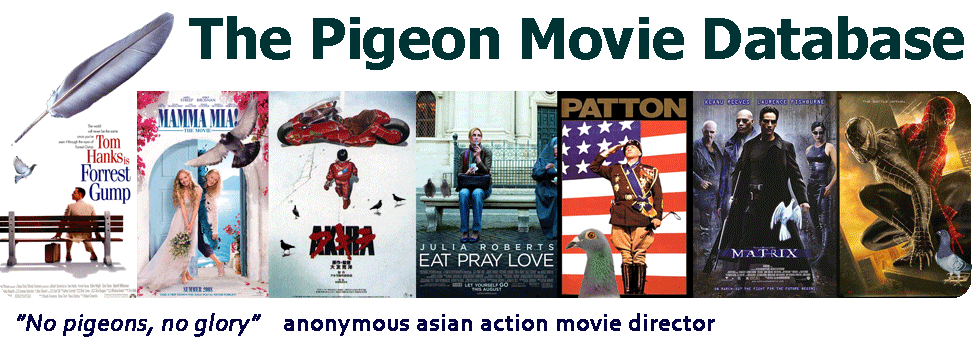Year: 1990
Director: Stephen Hopkins
Running time: 108 min.
Country: United States.
Mike Harrigan is an LAPD Lieutenant who is in search of an alien which is slaughtering city inhabitants. Dorinda Seed is a female pigeon from L.A. She and her folks had a nice day and now are getting some rest on a roof (a place that they call home). In this sequence, Dorinda and Mike's lives are going to cross dramatically.
Mike is chasing the predator on a roof. He is very nervous, because this creature is a monster which slaughtered several colleagues of his. A common man would escape running away, but Mike wants to fix this mess.
On the other side of the corner, we find Dorinda and her friends, that are scared and fly away (scaring Mike too).
This is a nice picture of the pigeon, captured with its legs and tail feathers fully extended. This situation is also dramatic for Dorinda. It is not nice for a pigeon to fly in the darkness and it is ever worse, if it is flying in the middle of a violent duel.
This is not a pigeon, but the predator firing at Mike:
We can observe than when Mike returns fire, there are other pigeons flying in the background.
Details of the pigeon starring
- Source: Predator 2. Starring moment: 1:19:39.
- Pigeon activity: They are pigeons sleeping on a roof which are scared by a night duel between an L.A. policeman and an angry alien.
- Symbolism: It is interesting to see how pigeons are used to scare the movie protagonist and increase the film's tension levels. This is a typical ploy used in many action movies.
- Relevance: Low. Pigeons interfere with a human-alien duel, but they don't change the storyline.
- Training level: High. It is not easy for a pigeon to fly with poor light conditions. Here, they exhibit a very good performance.































































